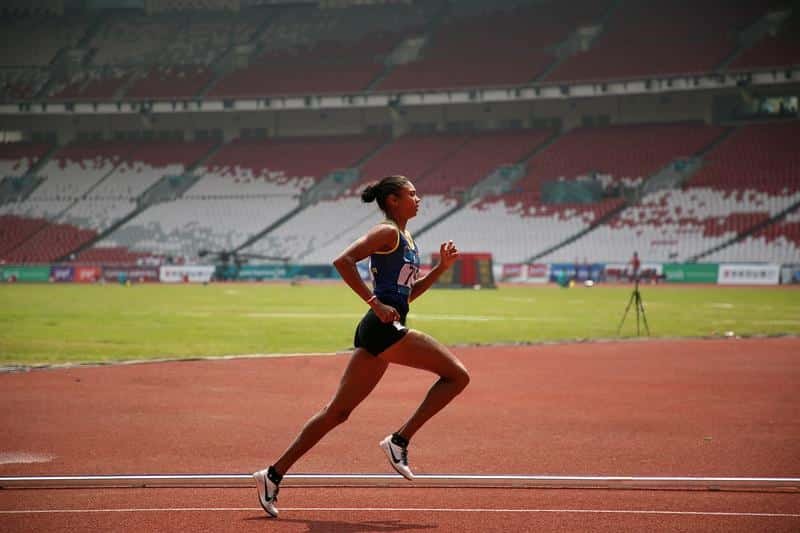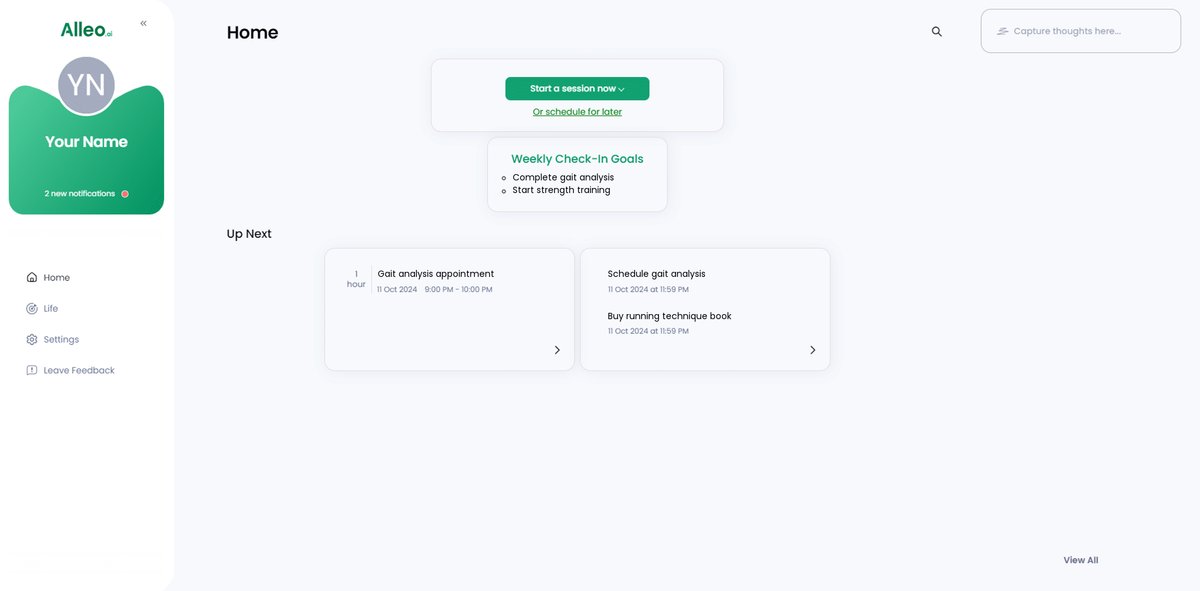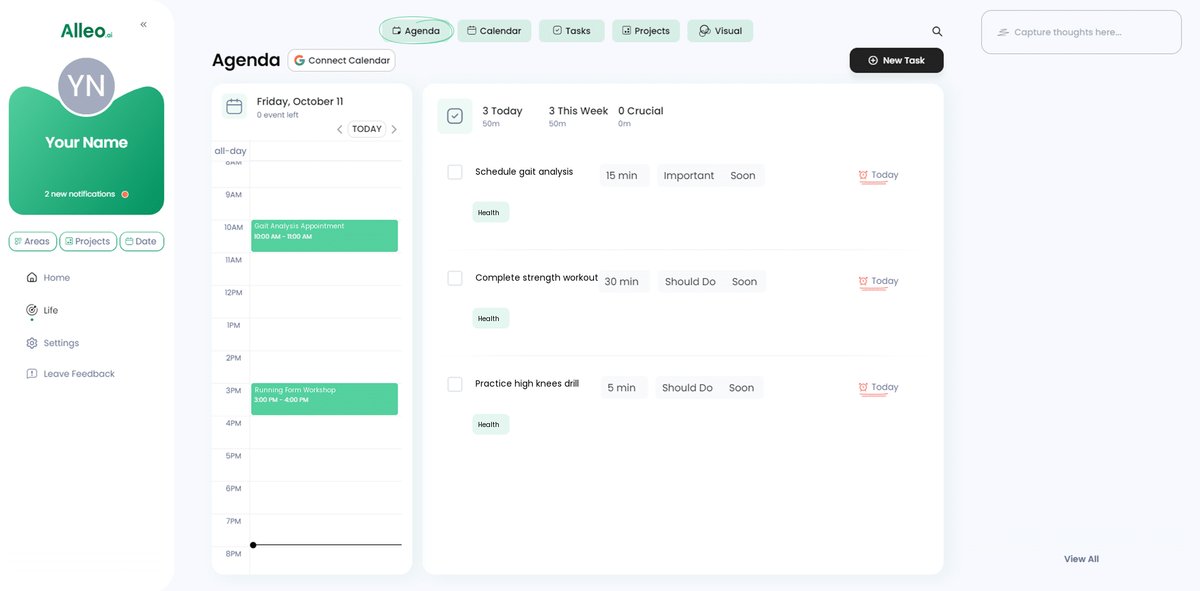Transform Your Running Form: Expert Guide to Gait Analysis Techniques
Imagine running faster, with less pain, and achieving personal bests without the constant worry of injuries. This is possible when you improve your running form through gait analysis.
As a life coach, I’ve helped many clients transform their running techniques using running biomechanics principles. I often encounter runners struggling with form issues that lead to recurring injuries, often stemming from improper foot strike patterns or suboptimal stride length.
In this article, you’ll discover how gait analysis can pinpoint and rectify running inefficiencies. You’ll learn actionable strategies, from professional assessments to targeted strength training, that can enhance your performance and reduce injury risk. We’ll explore how to improve running form through gait analysis, including posture correction for runners and cadence improvement techniques.
Let’s dive in and explore how treadmill gait analysis and wearable technology for runners can revolutionize your running efficiency.

The Hidden Challenges of Improper Running Form
Many runners deal with recurring injuries due to poor running form. Issues like overpronation, muscle imbalances, and overstriding are common culprits affecting running biomechanics and foot strike patterns.
These problems often go unnoticed until they cause pain or setbacks, hindering running efficiency techniques.
In my experience, runners often struggle to identify these inefficiencies on their own. Personalized solutions, such as stride length optimization and cadence improvement, are crucial for preventing injuries and enhancing performance.
Through gait analysis, you can uncover specific areas to improve running form. This approach helps you make targeted changes to run more efficiently and safely, utilizing techniques like posture correction for runners and injury prevention through gait analysis.

Your Roadmap to Better Running Form
Overcoming running form challenges and improving running form through gait analysis requires a few key steps. Here are the main areas to focus on for progress in running biomechanics:
- Undergo Professional Gait Analysis Assessment: Get a detailed assessment to identify inefficiencies in foot strike patterns and stride length.
- Incorporate Targeted Strength Training Exercises: Build core and lower body strength for stability and posture correction for runners.
- Practice Proper Running Technique Drills: Improve your form with specific drills focusing on cadence improvement and running efficiency techniques.
- Gradually Adjust Form Based on Analysis Findings: Make incremental changes to enhance efficiency and prevent injuries through gait analysis.
Let’s dive in to improve running form through gait analysis!
1: Undergo professional gait analysis assessment
Understanding and improving your running form starts with a professional gait analysis assessment to improve running form and biomechanics.
Actionable Steps:
- Schedule an appointment at a reputable sports performance lab or clinic offering gait analysis and running form assessment tools.
- Review your results with a specialist to identify inefficiencies like asymmetries, improper foot strike patterns, or stride length issues.
- Set clear goals based on your findings to improve your running form, including posture correction for runners and cadence improvement, and plan follow-up assessments.
Explanation:
These steps matter because they help you identify and address specific issues in your running form, leading to better performance and fewer injuries through gait analysis.
By working with a specialist, you can make informed adjustments to enhance running efficiency techniques. For more information, check out this detailed guide on gait analysis.
Taking the first step towards a professional gait analysis can set the foundation for long-term improvements in your running form, utilizing methods like treadmill gait analysis or wearable technology for runners.

2: Incorporate targeted strength training exercises
Strength training is essential for stability and power, helping to correct inefficiencies identified in your gait analysis to improve running form.
Actionable Steps:
- Focus on core and lower body strength. Incorporate exercises like planks, squats, and lunges to build stability and enhance running biomechanics. Aim for two to three sessions per week.
- Add plyometric exercises for power and agility. Include box jumps and single-leg hops to improve explosive strength and optimize stride length. Perform these 1-2 times a week, ensuring proper form.
- Monitor progress and adjust workouts accordingly. Use a fitness app or journal to track improvements in running efficiency techniques. Adjust intensity based on feedback from your body.
Explanation:
These steps matter because they build the muscle strength needed for a stable and efficient running form. Strength training helps prevent injuries and enhances performance, supporting posture correction for runners.
According to Runner’s World, incorporating strength exercises can correct muscle imbalances and improve running technique through gait analysis.
Key benefits of strength training for runners:
- Improved muscle endurance for longer runs and better cadence
- Enhanced joint stability to reduce injury risk
- Better overall running economy and efficiency
Implementing targeted strength training will create a robust foundation, making your running form more efficient and reducing injury risk through improved foot strike patterns and overall biomechanics.

3: Practice proper running technique drills
Proper running technique drills are key to refining your form and preventing injuries, serving as an essential component of gait analysis to improve running form.
Actionable Steps:
- Incorporate high knees and butt kicks. These drills enhance leg turnover and should be part of your warm-up routine, contributing to better running biomechanics.
- Focus on A-skips and B-skips. These exercises improve foot placement and arm swing, helping you run more efficiently and optimize stride length.
- Integrate drills into regular runs. Add form drills to your easy runs and speed workouts to build muscle memory and improve cadence.
Explanation:
These steps are vital because they help correct common form issues, leading to better performance and fewer injuries through posture correction for runners.
For instance, high knees and butt kicks improve leg turnover, while A-skips and B-skips enhance foot strike patterns and arm swing.
According to Runner’s World, incorporating these drills can significantly improve your running technique and overall running efficiency.
By consistently practicing these drills, you’ll develop a more efficient running form, setting the stage for long-term success and injury prevention through gait analysis.

4: Gradually adjust form based on analysis findings
Adjusting your running form based on gait analysis findings is crucial for improving performance and reducing injury risk. To improve running form through gait analysis, follow these steps:
Actionable Steps:
- Make small, incremental changes. Focus on one aspect of your form at a time, like reducing overstriding or optimizing stride length. This prevents overloading your muscles.
- Use feedback tools for real-time adjustments. Utilize wearable technology for runners or smartphone apps to monitor form changes and adjust based on real-time data and feedback, aiding in running efficiency techniques.
- Seek ongoing guidance from experts. Schedule periodic check-ins with a running coach or physical therapist to review progress and refine your running biomechanics.
Explanation:
These steps matter because gradual adjustments help you build muscle memory and avoid injuries. Utilizing running form assessment tools and expert guidance ensures continuous improvement in your running efficiency techniques.
According to Henry Ford Health, small changes can significantly enhance running efficiency and reduce injury risk through gait analysis.
Signs of improved running form:
- Reduced fatigue during and after runs
- Fewer aches and pains post-workout
- Improved pace without increased effort
Taking these steps will help you make sustainable improvements in your running form, setting the stage for long-term success in posture correction for runners and injury prevention through gait analysis.

Partner with Alleo for Improved Running Form
We’ve explored the challenges of improving running form through gait analysis and the steps to achieve it. But did you know you can work directly with Alleo to make this journey easier and faster? Our approach combines running biomechanics insights with personalized coaching to help you improve running form and gait analysis effectively.
Step 1: Set Personalized Running Goals with Alleo
Use Alleo to define and track your specific running form improvement goals. Receive reminders and motivational messages to stay on track. We’ll help you focus on key aspects like foot strike patterns and stride length optimization.
Step 2: Plan and Schedule Strength Training and Drills
Leverage Alleo’s scheduling feature to organize your workouts and drills. Get custom workout plans tailored to your gait analysis results, focusing on posture correction for runners and cadence improvement techniques.
Step 3: Monitor Progress and Adjust Plans
Input your progress data into Alleo to visualize improvements. Adjust your training plans based on Alleo’s AI-driven suggestions, incorporating running efficiency techniques and injury prevention through gait analysis.
Ready to get started for free? Let me show you how to improve running form using gait analysis with our advanced tools!
Step 1: Log In or Create Your Alleo Account
To start your journey towards better running form, log in to your Alleo account or create a new one to access personalized gait analysis tools and training plans.

Step 2: Choose “Build better habits and routines”
Select “Build better habits and routines” to create a structured plan for improving your running form, incorporating strength training exercises and technique drills into your regular routine, which will help you achieve more efficient and injury-free running.

Step 3: Select “Health” as Your Focus Area
Choose “Health” as your primary focus in Alleo to receive tailored guidance on improving your running form, reducing injury risk, and enhancing overall fitness, aligning perfectly with your goal of achieving better gait and running efficiency.

Step 4: Starting a coaching session
Begin your journey with Alleo by scheduling an intake session, where you’ll discuss your running goals and gait analysis results to create a personalized plan for improving your form and performance.

Step 5: Viewing and managing goals after the session
After your coaching session, open the Alleo app to find your running form improvement goals displayed on the home page, where you can easily track and manage your progress towards injury-free running.

Step 6: Adding events to your calendar or app
Use Alleo’s calendar and task features to easily schedule your running workouts, gait analysis appointments, and strength training sessions, allowing you to track your progress and stay committed to improving your running form.

Take the First Step Toward Injury-Free Running
Now that we’ve covered the essentials, it’s time to take action to improve running form through gait analysis.
Analyzing your running biomechanics can change your running game. You deserve to run efficiently and injury-free by optimizing your stride length and improving cadence.
Remember, the four-part solution to improve running form through gait analysis includes:
- Professional assessments using treadmill gait analysis
- Targeted strength training for posture correction
- Technique drills focusing on foot strike patterns
- Gradual adjustments to enhance running efficiency
Each step brings you closer to your goals of injury prevention through gait analysis.
I know this journey can seem daunting. But with the right guidance and running form assessment tools, you can achieve it.
Alleo can help you every step of the way. Set personalized goals, plan workouts, and monitor progress effortlessly using wearable technology for runners.
Start your journey to better running form today. Try Alleo for free and transform your running experience with improved running biomechanics.